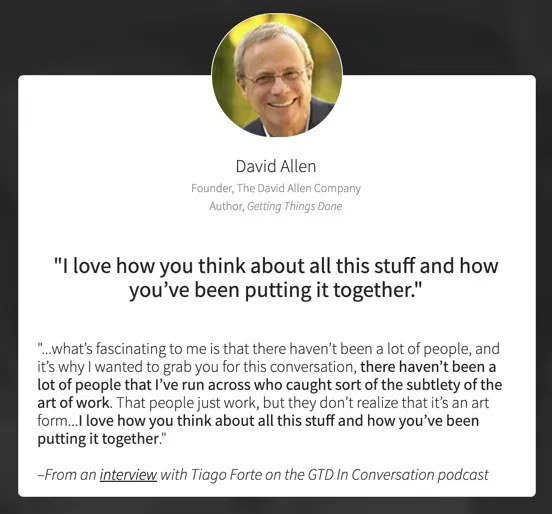I’ve been very resistent to the PARA system trend, I was able to bypass this until now. What changed? John from egghead just sent an email talking about using the PARA system with Notion. So since everyone is talking about this, I feel like I should at least understand what’s it’s all about.
So the PARA system comes from a course called Building a Secound Brain from Thiago Forte.
The course seems amazing but it’s U$499 but even the legendary David Allen, reviewed the course. So I’ve researched a little bit More about Tiago.
It seems that Tiago is a Evernote and Things 3 user. I’ve watched a interview he made with Keep Productive.
Tiago’s goal is to make tasks simple to manage. (That might be the reason he’s not using Notion)

Building a Second Brain
Organizing for insight.
PARA
PARA aims on being a flexible system for connecting long term efforts into motivating goals
- Projects
- Areas
- Resources
- Archive
It technically solves the flow between Non-Actionable Information and Actionable Tasks.
Projects
Usually projects are tasks with an specific deadline or endpoint much like OmniFocu’s projects. Tiago’s advice here is to Duplicate your project lists across platforms.
Using all the same labels, reduces the amount of context switching between tools.
Projects should be organized in Priority Order do they reflect your long term goals and values?
Areas
A continuous area of commitment. Habits, routines, rituals all of those are a area of commitment. You can differ areas from projects by remembering that projects are a laser focused on a specific goal, while areas are things that you maintain.
Areas are different to projects because you maintain areas and you achieve projects. They require very different mindsets. Projects are time bounded while areas are continous.

Mindsweep
All your possible projects
- Combine projects tied to same outcome
- Delete uninportant ones
- Move someday/maybe projects to the bottom
- Add single events to the Calendar and off your project list
Weekly Review
Create a habit to reconsider and rearange priorities.
Desired Outcome
Define the desired outcome of all of your projects. What you want and what success looks like written in the present tense with a specific date using action verbs (finalize submit send post publish complete) event if it’s not done by then, the date becomes a checking point.
So in topics
- Present Tense
- Specific Date
- Use action verbs [finalize, submit, send, post, publish complete]
Setting up a PARA System
Here are some tips that will help you setting up the PARA system on your own workspace.
Wipe Everything
There’s nothign wrong with wiping the slate clean! Save everything to an archive and you’ll find things if and when you actually need them. Also, remember to Do it every year in order to keep things tidy.
Folder Structure
Create a folder structure to start your workspace, create one folder for each of the following
- Project
- Areas
- Resources
- Archives
Try to mirror this structure across all apps and systems.
Dump all you unorganised files to Archive with something that assign’s today’s date into it. (You can move them back over time)
Create folders for all your current projects.
Planning Projects
When planning your projects is very important to add hard constraints around time lines. Anchor to other work/life events.
Create tiny briefs that just outline
- Who
- What
- When
- Why
Timeline collaborators motivation!
Create a Metaplan
Creatting a metaplan with your desired outcomes, and be very specific with these!
Expand Outcomes
Expand each outcomes into the projects needed to achieve it.
Define Small Projects
Break up big undertakings into little, manageble projects that you can systematically work through. It helps you from overwhelm and procastination
Organization
- Arrange you projects in a logical sequence
- What needs to come first?
- Look for dependencies upon one another?
Divide Into Chunks of Time
Divide you project help keep you in flow and pick up where you left off when you sit down to work.
Metaplans
Create metaplans for each smaller project. Collect all sources notes and Resources in one spot anything relevant, websites, notes, files, folders, examples literally everything!
Using digital notetaking apps to improve creative output (Notion, Evernote, Notes, any app will do) This is about building a personal knowledge base.
- Compile many types of media
- Promote Unusual Associations
- Incubate ideas over time
- Create visual artefacts (See things to understand them gives us spacial reasoning and pattern matching)
- Raw material for unique interpretations and perspectives (Forming opinions backed by research and intentional thoughts)
Your Notes Should be
Personal
Optimised for you, not aimed at public presentation. Informal, direct and dirty
Unpolished
Messy, random, non-sensical and not aimed at a particular outcome
Open-Ended
You’re allways adding to and building your knowledge base
Diverse Mediums
Images, audio, video, tweets, books, articles, music, diagrams, sketches, code, demos, sliders, websites, podcasts and much more!

Consuming Information
We need to flip our approach to consuming information! Instead of fleeting moments of insight, we should make Investments in a long future of learning and creation.
Browsing the library of your own mind is enourmously different to the generalised documents of strangers.
Consider 12 Favourite Problems
Consider 12 favourite problems you want to guide you over the next few years. These are your open-ended guides for learning.
Long term “slow bum” ideas; the big themes of your mind
Progressive Summarisation
We need a note-taking system that balances with Discoverability and Understanding.
Discoverability
Requires Compression to make notes smaller simpler, and easier to digest.
- Bolding Highlighting and writting summaries.
- Have to be able to quickly scan and find stored information
Understanding
Keeping context in tact so the content is still meaningful and usefull. Citations details and Examples.
💡 How do I make what I’m consuming now useful to my future self?
As humans, It’s very hard to predict what the future want’s and needs
We solve that with Progressive Summarization condensing your notes in stages
Notes First Organization
Engages you with the note content directly. Notes become single atoms we can rearrange in any form.
Tags are too fragile and require constant maintainance.
Notebooks are better but supress random connections and serendipity
Notes Layers
Move notes though the layers opportunistically, only when you’re organically reviewing them in daily work. Not every notes goes through all the layers.
- Raw Notes
- Bold Passages
- Highlights
- Essential Summary
- Remix into Original Creation
Each layer adds a level of compreension and condenses its meaning. It gives us a personal information landscape we can easily navigate and drop down into for deeper context.
Focus on what resonates when highlighting and summarising. Don’t worry about how it fits into the bigger picture.
Gives us a personal information landscape that we can easily navigate and drop down into for deeper context.
Maximizing Return on Attention
Thinkign of return on attention like ROI.
We invest attention in tasks and want to make sure we see valuable returns for that effort
We ant to build a system for Personal Knowledge Management that frees up attention, rather than consuming it.
The Flow
Energized focus, full involvement and enjoyment like a child immersed in play.
Valuable returns comes from the state of Flow pinnacle of experience, performance learning
The Biochemistry of Flow
Endorphins
Create pleasure and inner calm
Nitric Oxide
Supress stress and creates relaxation
Dopamine
Improves pattern recognition
Anandamine
Improves divergent lateral thinking
Norepinephrine
Creates focus to ignore distractions
Sitting down to work
When we sit down to work we have to get through the struggle of
Environmental Preparation set up desk lighting, silence distractions
Mental Preparation recall relevant topics question facts priorities
Emmotional Preparation facing self-doubt, fear and uncertainty
All of that before we get into a state of flow. The good news is that the enourmous effor and attention cost of getting into flow makes us resistant.
Placeholding
We can try to solve that will placeholding. Our focused work sessions need to be broken down into a series of small packets. More frequent, shorter work sessions, less vulnerable to interruption.
- Research
- Brainstorms
- Outlines
- Drafts
- Final Edits
The breaks between packets allow you to gather feedback. Flexibility to create value in various time spans and contexts. It also allows us to reuse packets becomes a modular system between projects.
We need clear goals with instant feedback and a good balance of challenge and skills to enter in the flow.
Being good at jumping into small packets of work anytime requires us to master how we enter information in our system and how we take it back out to apply in our problem.
Don’t Just Consume Content
Draw sketchnotes, make notecards, highlight, find meaningful ways to interact with it. This integrates what you’re learning with what you already know and encodes the knowledge.
Ways of Wrestling with Knowledge
See
See it in different context get other opinions.
Write
Take notes, write summaries
Draw
Sketchnotes, mindmap and diagrams
Produce
Create original content condesing, interpreting, critiquing, transforming
Perform
Present at meetups record videos
Sell
Any exchange of value, collaboration, teach others